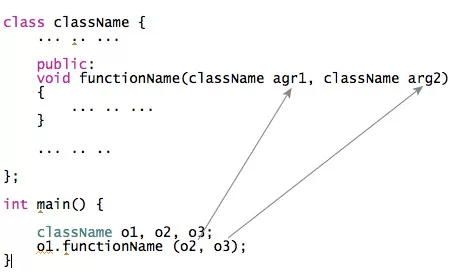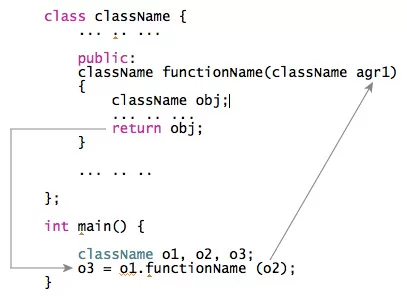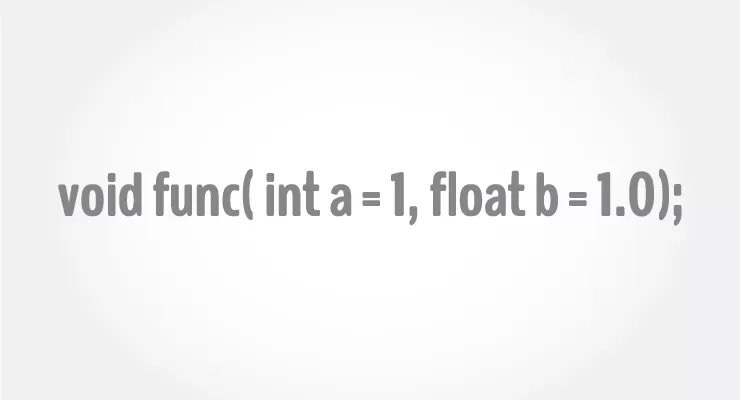
در این آموزش، یاد خواهید گرفت که اشیاء را به تابع ارسال و دریافت کنید.

در برنامه نویسی C++، اشیا به شیوه ای مشابه با ساختار ها (struct) به تابع ارسال می شوند.
چگونه می توان اشیاء را به تابع انتقال داد؟

مثال ۱ : انتقال اشیا به تابع
#include <iostream>
using namespace std;
class Complex
{
private:
int real;
int imag;
public:
Complex(): real(0), imag(0) { }
void readData()
{
cout << “Enter real and imaginary number respectively:”<<endl;
cin >> real >> imag;
}
void addComplexNumbers(Complex comp1, Complex comp2)
{
// real represents the real data of object c3 because this function is called using code c3.add(c1,c2);
real=comp1.real+comp2.real;
// imag represents the imag data of object c3 because this function is called using code c3.add(c1,c2);
imag=comp1.imag+comp2.imag;
}
void displaySum()
{
cout << “Sum = ” << real<< “+” << imag << “i”;
}
};
int main()
{
Complex c1,c2,c3;
c1.readData();
c2.readData();
c3.addComplexNumbers(c1, c2);
c3.displaySum();
return 0;
}خروجی
Enter real and imaginary number respectively:
۲
۴
Enter real and imaginary number respectively:
-۳
۴
Sum = -1+8i
چگونه از تابع شی برگردانیم؟
در برنامه نویسی C++، اشیا همانند ساختار ها (struct) بازگردانده می شوند.

مثال ۲ : ارسال و بازگشت شی از تابع
در این برنامه، مجموع اعداد پیچیده (شی) به تابع ()main باز گردانده و نمایش داده می شود.
#include <iostream>
using namespace std;
class Complex
{
private:
int real;
int imag;
public:
Complex(): real(0), imag(0) { }
void readData()
{
cout << “Enter real and imaginary number respectively:”<<endl;
cin >> real >> imag;
}
Complex addComplexNumbers(Complex comp2)
{
Complex temp;
// real represents the real data of object c3 because this function is called using code c3.add(c1,c2);
temp.real = real+comp2.real;
// imag represents the imag data of object c3 because this function is called using code c3.add(c1,c2);
temp.imag = imag+comp2.imag;
return temp;
}
void displayData()
{
cout << “Sum = ” << real << “+” << imag << “i”;
}
};
int main()
{
Complex c1, c2, c3;
c1.readData();
c2.readData();
c3 = c1.addComplexNumbers(c2);
c3.displayData();
return 0;
}